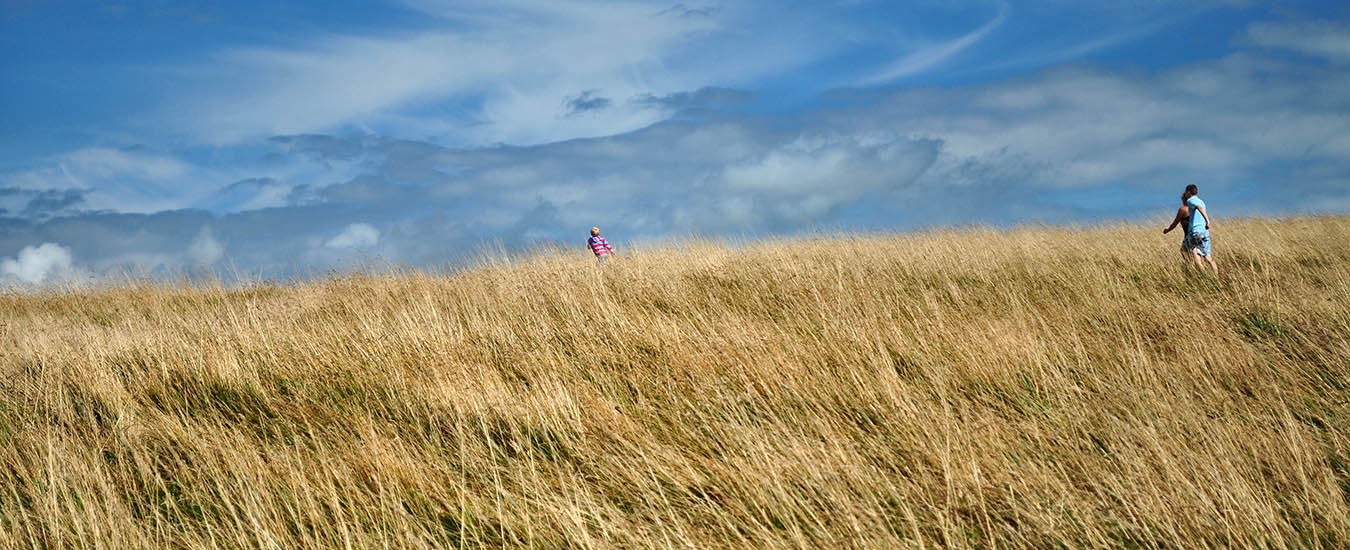The Myers' 19th century home on Nova Scotia's Eastern Shore tells the story of a traditional Maritime life-albeit one with 13 daughters.
Imagine washing cloth diapers for three straight decades during an era when there was no cold water Tide, no Maytags-no running water.
Ethelda and Ervin Myers must have had incredible stamina, and the patience of Job: between 1902 and 1925, Ethelda bore a total of 13 healthy baby girls, surely setting some kind of record well beyond their home at Jeddore Oyster Pond, on Nova Scotia's Eastern Shore.
Marion was the first born and Winnie was the last. During the 23 intervening years Rita, Audrey, Ida, Margaret, Jean, Vera, Inez, Roxie, Francis, Violet and Dorythea were born. Three of the women are still alive today: Roxie (formally named Gwen, who resides in Burlington, Ont), Dorythea (nicknamed Dot, of Maple Ridge, BC) and Jean (of Dartmouth, NS). Educated in the two-room Oyster Pond School, the girls grew to become career women in such fields as teaching, nursing, secretarial and the Armed Forces.

The family's story-and that of Eastern Shore community life-is told at the Fisherman's Life Museum, located in the former home of the Myers family and part of the Nova Scotia Museum network. Martha Monk, site manager and lifelong Eastern Shore resident, supervises a staff of four seasonally, from June 1 to October 15, and hers is a labour of love.
Martha has familial and emotional connections to the site. A Day by birth (Day, Myers and Mitchell being the most common surnames in the area) she grew up just a few houses away from the Myers household. Her husband, Reid Monk, was a cousin of last-born Winnie's husband.
As a little girl Martha recalls-sometime before 1958, the last year Ethelda lived in the house before going to live with one of her daughters-being chased out of the Myers' apple trees by an elderly, broom-wielding woman whose demeanour at first seemed threatening but whose hearty laughter melted away the intimidation, as if to acknowledge what she must have been reminded of many times over: girls will be girls. It may have been such a blend of firmness and joviality that got Ethelda through the challenges of raising 13 children in an 1857 eight-room house.
The museum setting is evocative of a time and place: the yard is bordered by a pole fence with a plain gate, there's a simple white house with two chimneys, a sizable barn with remarkably large red double doors and a woodshed. Clothes blow and snap on a line above a contoured grassy yard that's dotted with bedrock characteristic of the area.
An expressive sheep greets visitors with a look that says, "What are you doing here?"
The apple trees are still there, as is the garden where the family grew vegetables and hops (used as a yeast substitute for making bread). Inside, a fire is stoked in the stove and the smell of freshly baked ginger cookies lingers in the air. A modest, round table sits in the kitchen, where property curators say there once stood a long, wooden table for the family to eat together at a single sitting. They ate as a family, not in shifts, says Martha, adding that for an extended period, Ervin's mother and father-James and Elizabeth-lived there while as many as seven of the girls were still at home. That makes 11 for breakfast, lunch and dinner.
"It's wonderful," says Martha, adding that every single day she goes to work is "like going back home."
The museum tells stories of the girls playing baseball (when it wasn't haying season), and of skating on the frozen Navy Pool, a salt-water inlet fed by the rushing tides of a narrow channel.
Martha herself tells a story or two. She recounts how fourth-born Ida contracted tuberculosis when she was 23, working as a nurse. Ervin built a special room onto the main part of the house in an attempt to create a quarantine environment, and for a year and a half, Ida was isolated in her room with windows ajar-throughout the seasons. As she sat there in her room, no doubt watching with frustration as life went on outside, it became commonplace for local passersby to stop and talk with her, offering what short-term solace they could-while keeping a safe distance. At times she slept with snow on her bed, but the discomfort paid off: her eventual cure was attributed to the fresh air.
Everyone had his or her share of toughing it out during an era when there was little choice of "lifestyle," only the needful tasks of daily living. Men like Ervin Myers used to leave on Monday mornings and row the 11 miles to Roger Baron Island, outside the longest harbour on Nova Scotia's Eastern Shore. Residing in a simple shack with a bed, a stove and a table, each would eke out an existence harvesting cod and scale-fish such as haddock, halibut, mackerel and herring-returning home on Fridays, weather permitting. Cod liver oil was a staple, stored in barrels both at home and on the island, because everyone took it. Other staples came from the stock of pigs, chickens, "probably a duck or two," a beef cow and a dairy cow, all supplemented by a team of oxen for doing the heavy work. And, the Myers would have kept geese for Christmas and Easter.
"They didn't have a Sobeys," Martha reminds us.
